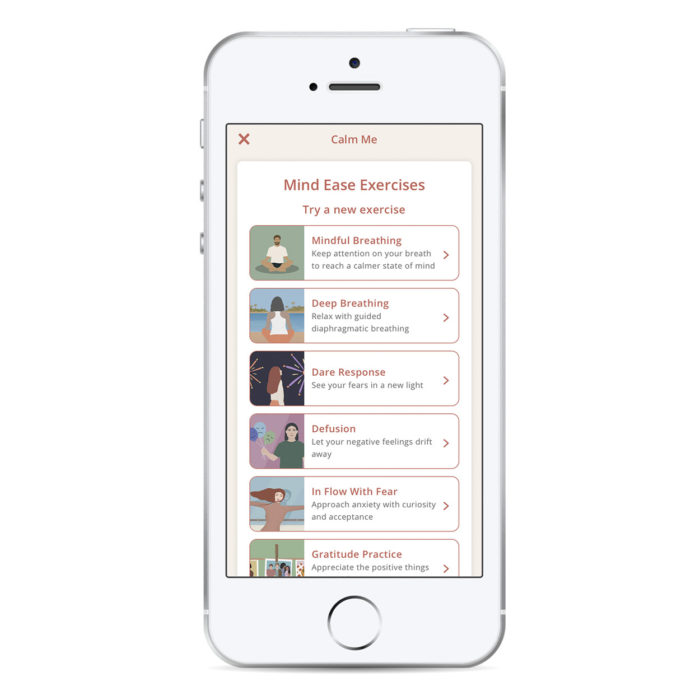▶ LGBTQ+ Mental Health: Celebrating Pride Month
Many LGBTQ+ individuals can struggle with mental health problems. This Pride Month, we bring you the latest research on what can help.
Pride Month is an opportunity to reflect on the progress we’ve made, as well as the journey still ahead of us, when it comes to accepting gender and sexual diversity. Supporting the mental health of LGBTQ+ individuals is an integral part of this effort – and this article will help you understand how best to do it. Throughout, we will be using the acronym LGBTQ+ to represent those identifying as lesbian, gay, bisexual, transgender, queer or questioning, as well as intersex and asexual individuals.
Did you know? Pride Month is celebrated in June to commemorate the 1969 Stonewall riots in the United States – a series of demonstrations that brought unprecedented progress for LGBTQ+ rights.
The past few decades have undoubtedly brought about cultural and political progress for LGBTQ+ individuals, particularly in the West. As of 2022, thirty countries around the world have legalised same sex marriage. A recent poll showed that the majority of Americans believe that gay people should have equal rights in the workplace. Representation in the media has also increased, with shows such as Queer Eye and Ru Paul’s Drag Race gaining wide popularity.
Unfortunately, despite these improvements, identifying as LGBTQ+ still remains a significant risk factor for having mental health problems. For example, having a lesbian, gay or bisexual identity is associated with more mood and anxiety disorders. Tragically, sexual minorities have 3x the risk of suicidal behavior than their heterosexual counterparts, and nearly half of all transgender individuals have experienced suicidal ideation in the past year.
To better understand and support LGBTQ+ wellbeing, we have collected helpful research findings for you below. While reading, please bear in mind a few caveats:
- Most of the existing research has focused on those identifying as either gay or lesbian. Important gaps remain in our understanding of mental health for other gender and sexual identities.
- Mental health varies significantly based on racial, ethnic, cultural and socio-economic factors. More research is needed to better appreciate these intersectional influences on wellbeing.
What are the biggest risk factors for developing mental health problems?
Research has found a number of factors that are associated with worse emotional outcomes for gender and sexual minorities. These have included:
- Familial conflict. Unfortunately, many LGBTQ+ individuals experience a negative response from their family members after coming out. This can include verbal and physical harassment, at times even resulting in exclusion and homelessness.
- Peer victimization and bullying. The average age of coming out is currently around 14 years old. While it’s great to see people embracing their identity younger than ever before, it also coincides with a period of heightened pressure from peers to conform. As a result, a lot of LGBTQ+ youth may experience bullying and other forms of marginalization.
- Social stigma, prejudice and discrimination. This can include a number of negative experiences, like facing hostility in religious groups, having trouble finding housing or employment, or even becoming a victim of hate crimes.
- Laws and policies limiting LGBTQ+ rights. Depressingly, many countries around the world still criminalize gender and sexual minorities or take steps to restrict their rights and protections. Whether you’re affected directly by this or find yourself frequently exposed to stressful world news, it can be significantly detrimental for one’s mental health.
- Limited access to romantic partners. Gender and sexual minorities can experience more anxiety when dating and greater difficulty forming romantic relationships. Socio-demographic factors, such as living in urban vs rural areas, can significantly influence opportunities to meet other LGBTQ+ individuals.
- Frequent negative thoughts (rumination). As a result of the difficulties outlined above, LGBTQ+ individuals can be more prone to distressing thinking patterns, low self-esteem or feelings of despair. This can include self-stigma internalized from societal messages. Research shows that the feeling of being a burden on those around you can be especially harmful and may increase suicidal tendencies.
- Increased consumption of alcohol and other substances. While this is usually used as a coping strategy to help manage distressing thoughts and feelings, it often leads to the development of secondary physical and mental health problems.
What can protect LGBTQ+ individuals from mental health problems?
- Improvement in familial relationships. Because of the significant influence of familial support on mental health, family therapy as well family-focused educational programmes have been strongly recommended by researchers in this area.
- Anti-bullying policies. Sexual orientation and gender identity-specific policies have been linked to fewer suicide attempts in LGBTQ+ individuals. These can include anti-harassment measures in schools and workplaces, as well as alliance clubs, where minority members can meet each other.
- LGBTQ+ friendships. Connection with other members of the same community, be it through real life events, online forums or even social media platforms, can significantly reduce the stigma and isolation experienced by many. For example, some researchers recommend that coming out is best done gradually with the support of others – starting with trusted loved ones to build up an effective support network. There are also many LGBT rights organizations around the world that you can contact to help find people you can better relate to.
- Professional help. There is no shame in seeking help for mental health problems, no matter how big or small. Regular sessions with a therapist, a psychiatrist or a social worker can significantly speed up recovery and prevent more serious issues from developing. For transgender individuals, psychotherapy is sometimes recommended before transitioning to help understand the complexities and risks involved, as well as providing possible support during the process.
How can I get help for my mental health?
1. From a trusted professional
When seeking professional help, many people prefer working with clinicians that identify as LGBTQ+ themselves or have specialized in this area long-term. If you struggle finding someone like this in your area, try searching online – nowadays many options exist to access counseling remotely.
When discussing mental health services, it is important to acknowledge that the fields of psychology and psychiatry have caused their own share of stigma over the years. This has understandably resulted in some distrust towards these services by some LGBTQ+ individuals. Let’s take a closer look at why.
Firstly, it is an unfortunate fact that historically LGBTQ+ experiences were once classed as mental health disorders. Luckily, those days are behind us and the only official diagnosis that remains in use is that of gender dysphoria. This refers to the distress experienced when feeling that one’s gender identity or expression does not correspond with the gender assigned at birth. While some consider this diagnosis to be unnecessarily pathologizing, it may facilitate access to insurance-covered mental health care.
Secondly, many young people today are still coerced into harmful “conversion therapy”, which attempts to change their gender identity or sexual orientation. This practice has been widely discredited and the American Psychological Association has issued statements against it.
Despite these breaches of trust, we believe that nowadays the vast majority of mental health professionals are committed to creating a safe and accepting space for LGBTQ+ clients. We therefore recommend seeking professional help if you are experiencing distress. Going through official channels, such as the professional organization of psychotherapists or psychiatrists in your area, should greatly increase your chances of finding a clinician committed to an appropriate code of ethics.
If you feel at immediate risk of harming yourself, please do not hesitate to call your local emergency number or a mental health crisis line in your area.
2. Using self-help tools
Self-help tools can also be incredibly helpful if you struggle to access in-person professional help, or if you just want extra resources for better mental health. Many research studies have found that self-help interventions can be very effective for managing depression and anxiety disorders.
The Mind Ease app can provide you with many self-help exercises for managing anxiety and low mood. With a dedicated team of clinicians, we have created many activities to help you increase self-esteem, find more hope, cultivate self-compassion and improve your sleep quality. We also have a library of exercises that provide relief from acute anxiety – such as mindful breathing, muscle relaxation, calming visualization and reflective writing.

We hope that this article and the resources suggested will help you better safeguard your well being and the wellbeing of any LGBTQ+ individuals in your life. We wish you a Happy Pride Month!





